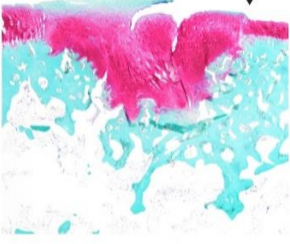Research
Adipose Tissue Engineering
Adipose tissue engineering can be used to develop tissue models to better understand obesity and related diseases. In our lab, we are utilizing natural hydrogels made of collagen, alginate, and hyaluronic acid. By altering hydrogel properties, we can understand how the extracellular matrix impacts the diseased or healthy state of adipocytes. In the future, this knowledge can be used to develop highly controlled disease models for drug screening.
Cartilage Tissue Engineering

Cartilage tissue engineering emerged nearly thirty years ago as having the potential to treat osteoarthritis. In our lab, we use natural biopolymers, such as collagen and hyaluronic acid, to make hydrogels that recapitulate the native tissue environment and regenerate damaged cartilage. To better model the ability of our hydrogels to regenerate cartilage, we analyze the hydrogels under conditions that simulate those of osteoarthritis.
Protein-Based Adhesives

In collaboration with Prof. Jonathan Wilker (Purdue, Chemistry), the Liu group rationally designed a recombinant protein to serve as a surgical glue for soft tissues. These novel, biologically-inspired materials combine the adhesive properties of mussel adhesive proteins, which mussels use to bind strongly to surfaces, and the flexible properties of elastin, which contributes to the ability of blood vessels to withstand the mechanical demands of pulsatile flow. These materials also demonstrated “smart” behavior in response to their environment, and this behavior provided a mechanism to conveniently apply the material underwater. Follow up studies investigated formulations containing crosslinkers and oxidants and identified formulations that provide rapid, strong bonds for collagen-to-collagen substrates, which mimic soft tissues. Furthermore, we compared adhesion achieved through L-3,4-dihydroxyphenylalanine (DOPA) and thiol chemistry and found a synergistic increase in adhesion strength when utilizing both DOPA- and thiol-based chemistry simultaneously. Current studies include developing adhesive and sealant formulations for clinical applications. Furthermore, we are investigating oyster proteins that are a part of oyster cement to develop a new class of inorganic adhesives.
Protein-Based Materials
.jpg)
Recombinant protein design allows for the inclusion of particular sequences that confer specific functionalities and responses to environmental stimuli (e.g., changes in temperature, pH). To fully utilize the potential of these biomaterials, her work focuses on establishing key sequence-structure-function relationships between protein design and the resulting material properties. Thus, her group has investigated relationships that affect cell adhesion and cell differentiation. Furthermore, her lab has designed smart materials that change conformation or properties in response to variations in temperature, pH, or redox conditions.
In Vitro Tissue Modeling
The Liu group is developing an in vitro tissue model for drug testing.
